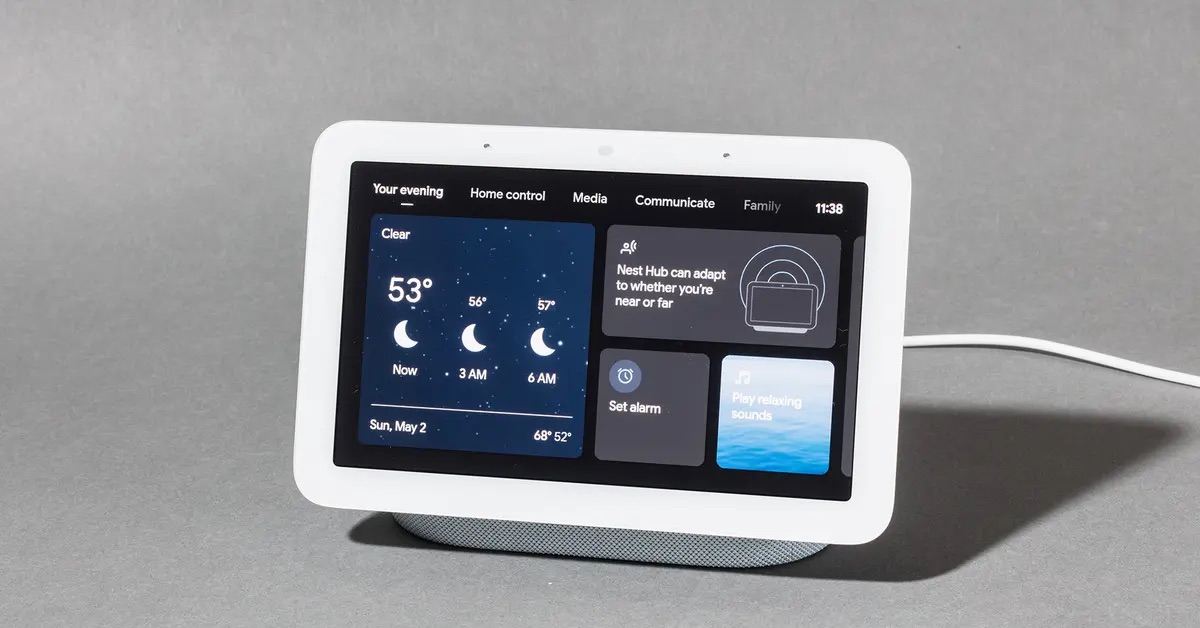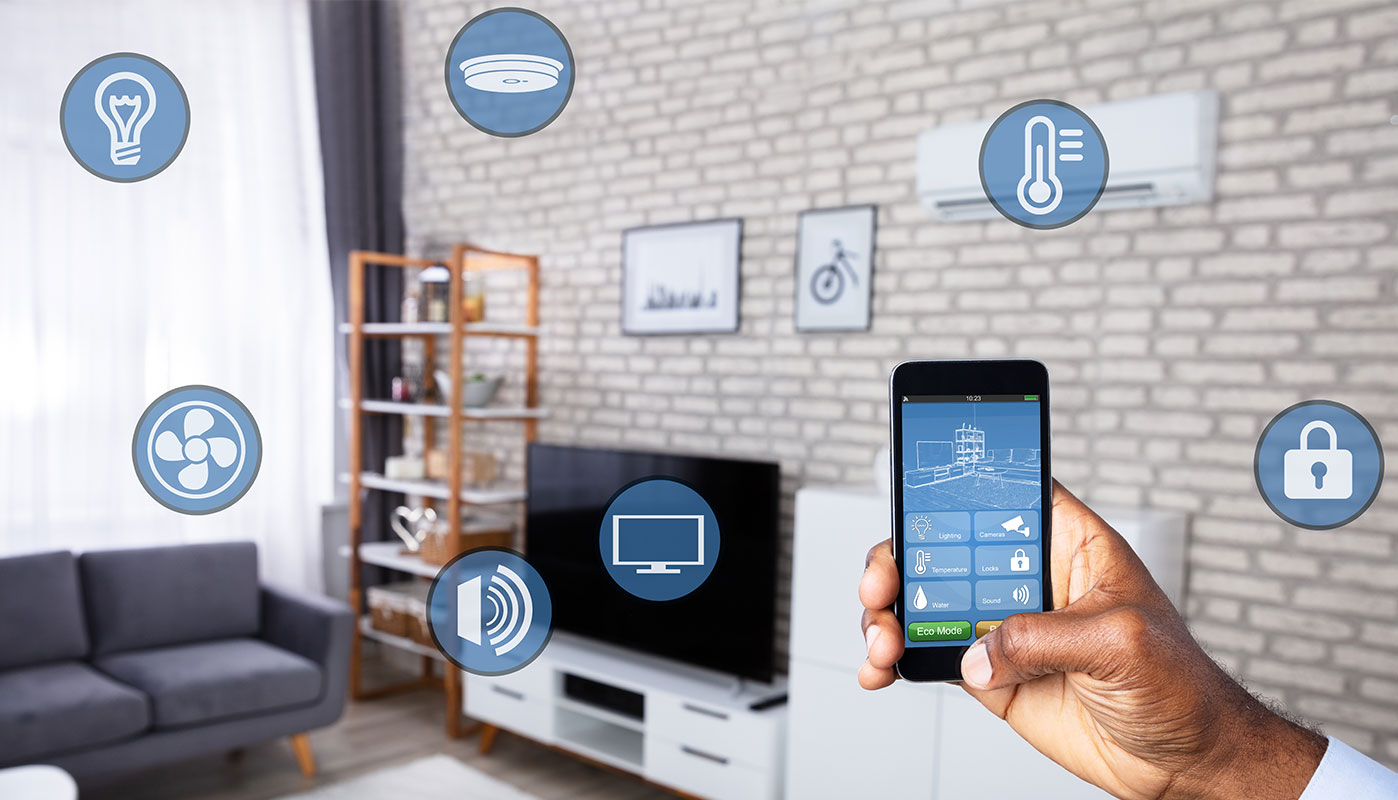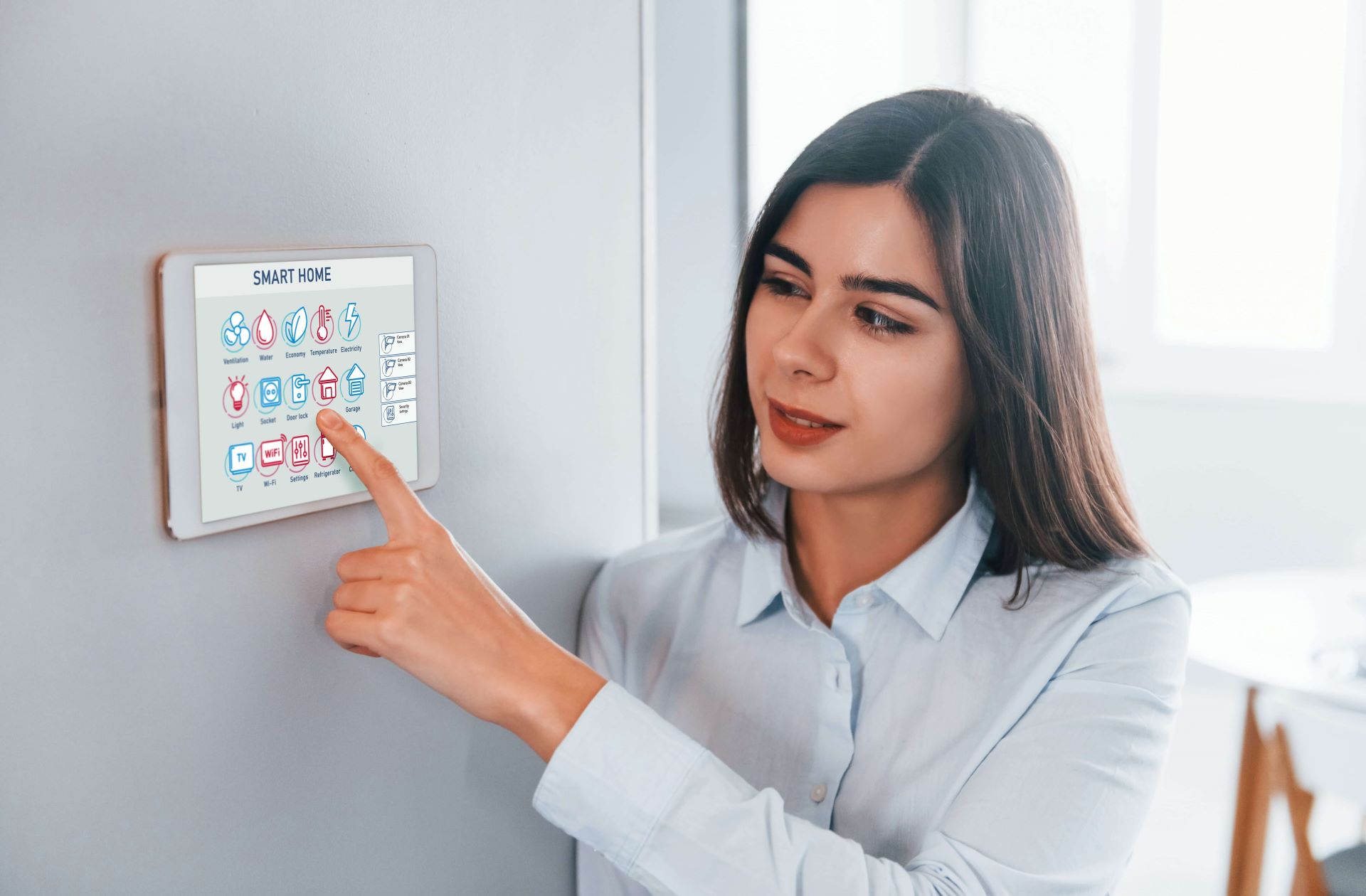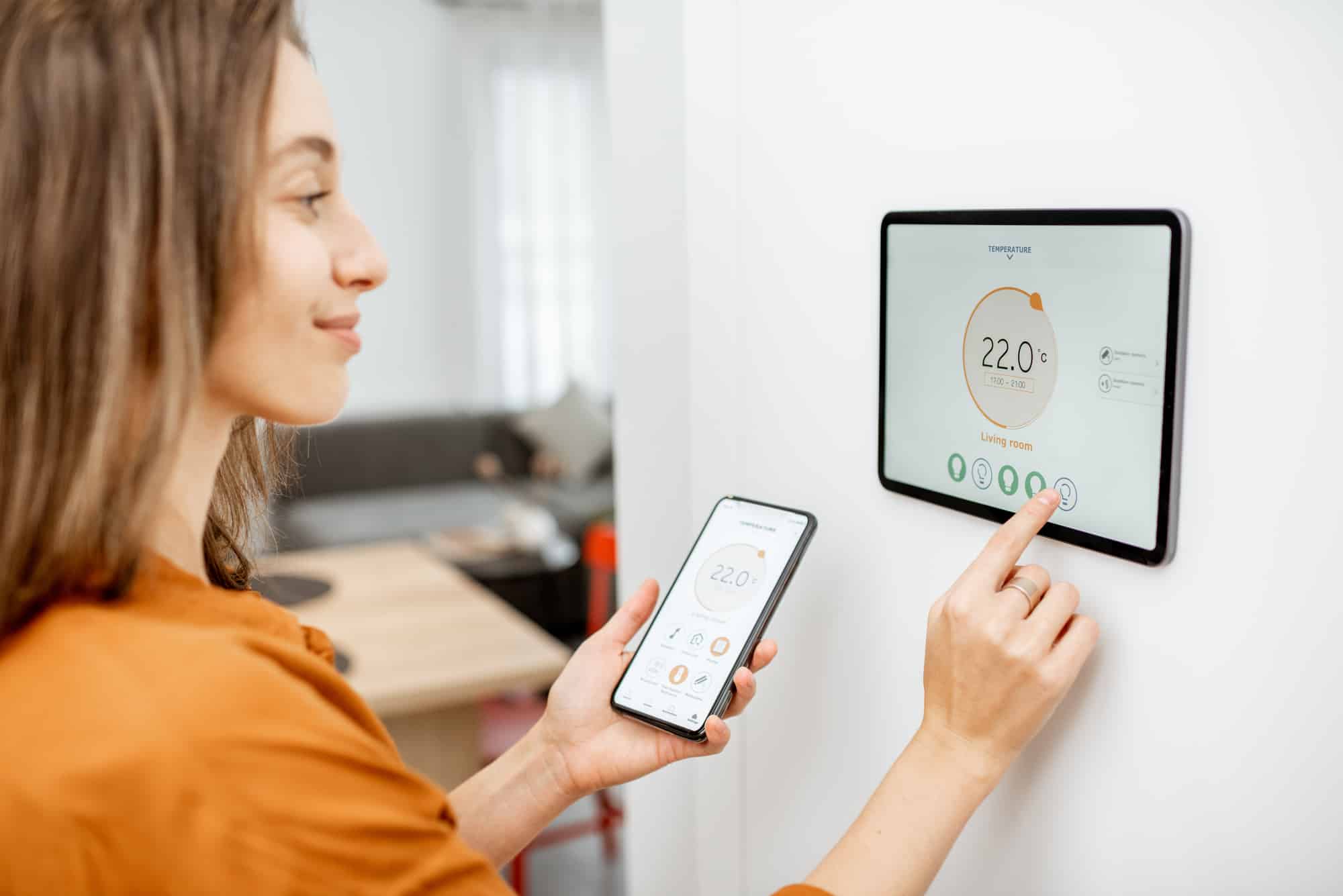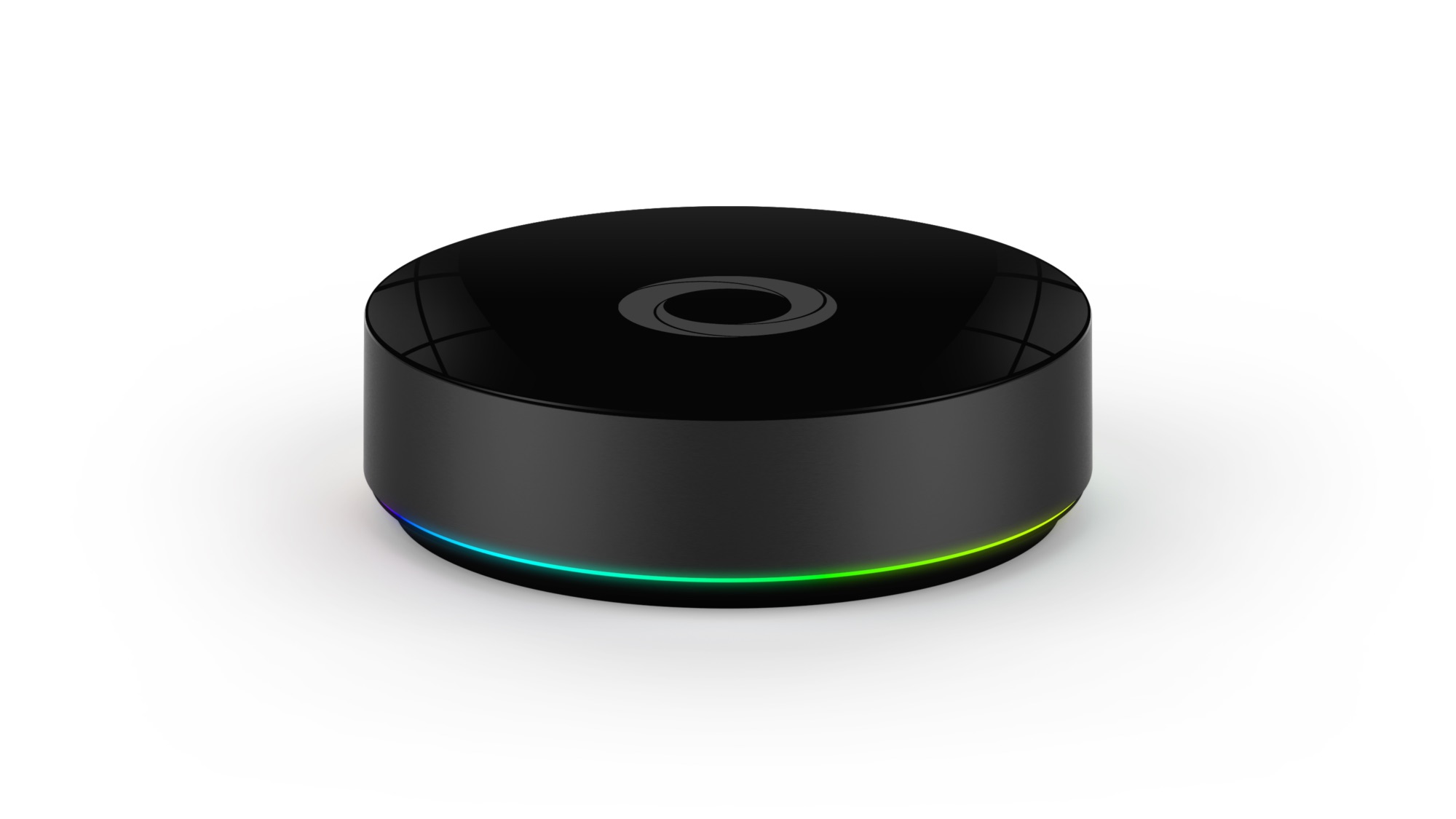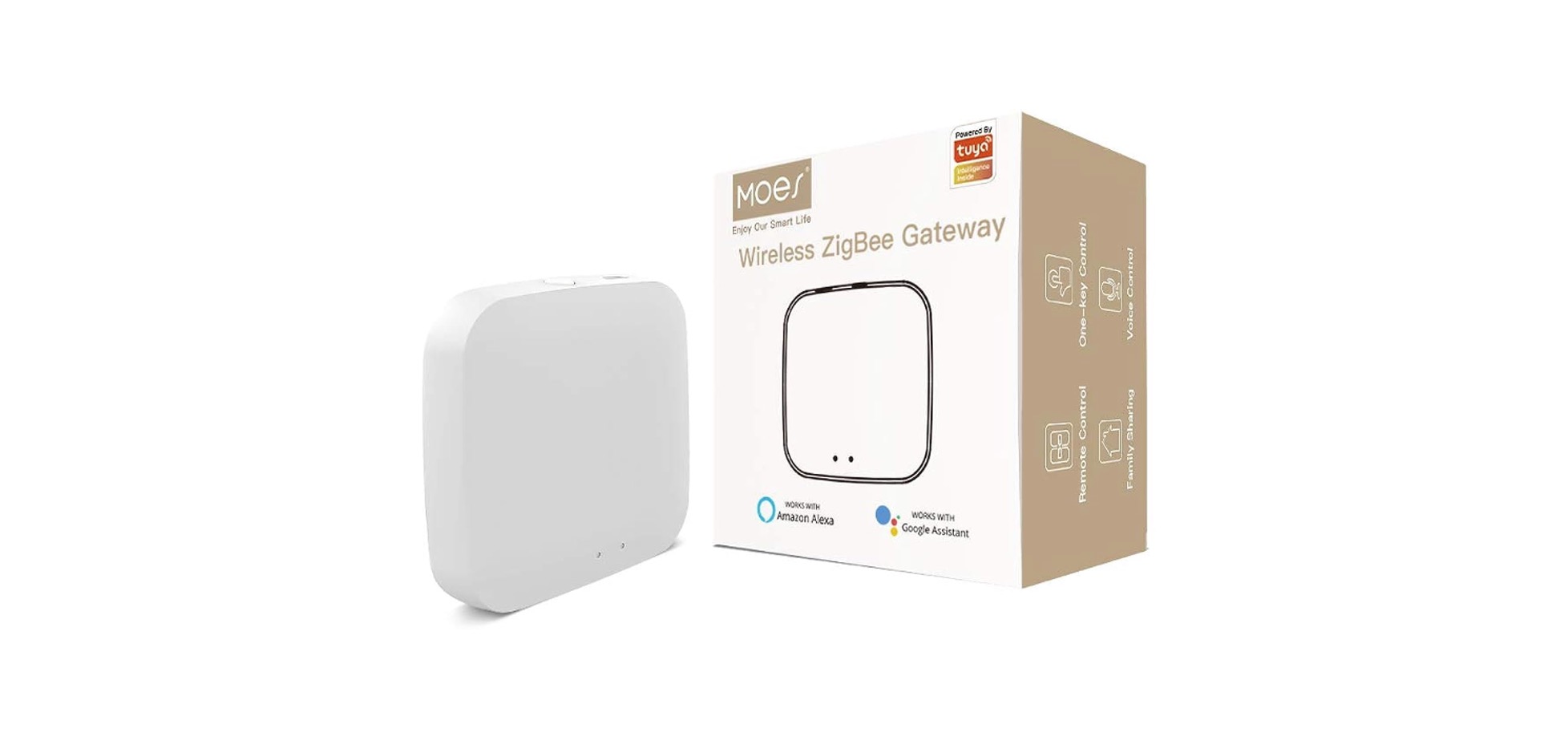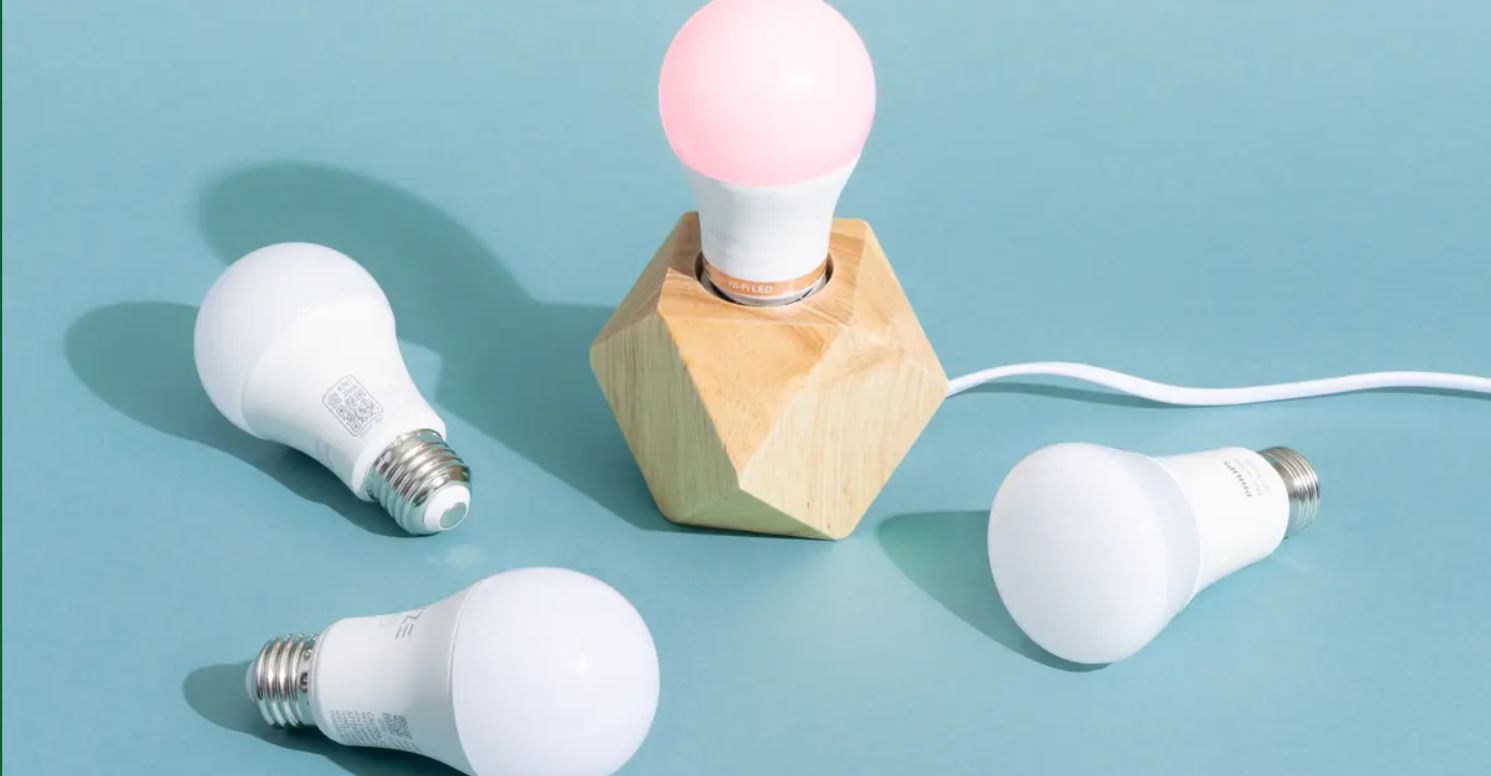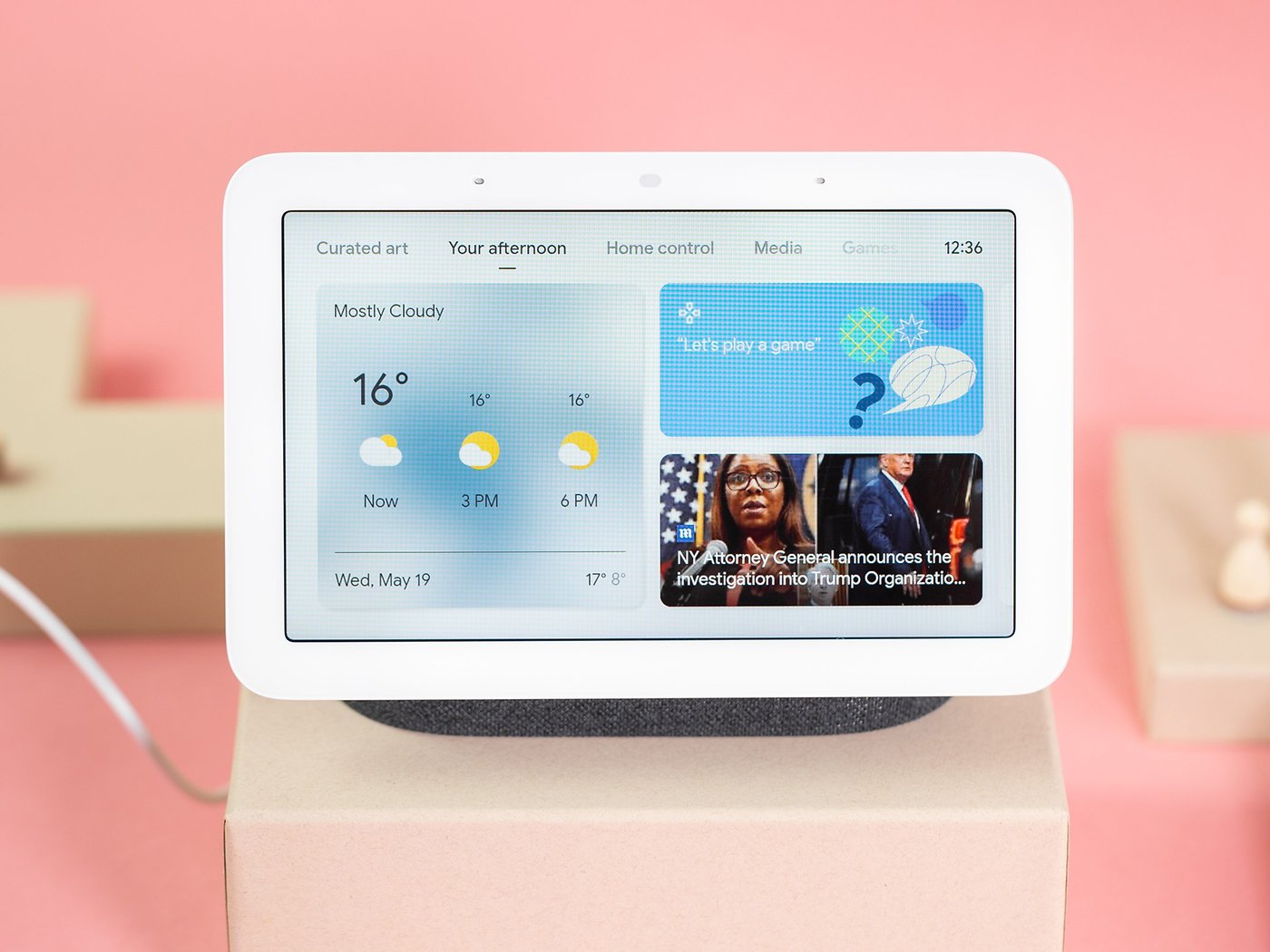Introduction
Welcome to the future where your home is not just a place to live, but a smart, interconnected ecosystem that enhances convenience, comfort, and security. Smart home automation is revolutionizing the way we interact with our living spaces, allowing us to control and monitor various devices and systems with a single touch, voice command, or even from miles away.
Imagine arriving home from a long day at work and your smart home anticipates your arrival, automatically adjusting the temperature, turning on the lights, and playing your favorite playlist as you step through the door. Or easily managing your home’s energy consumption, optimizing your environment to reduce costs and minimize your carbon footprint.
Smart home automation refers to the integration of technology and devices that enable control and automation of various functions within a house. This includes lighting, heating, ventilation, air conditioning (HVAC), security systems, appliances, entertainment systems, and more.
The benefits of smart home automation are vast. One of the key advantages is convenience. With the ability to control devices remotely, you can ensure that your home is prepared for your arrival, even if your plans change. For example, you can remotely adjust the thermostat to heat up or cool down the house before you arrive, ensuring optimal comfort upon entering.
Another benefit is enhanced security. Smart home automation allows you to monitor your home with the help of cameras, motion sensors, and door/window sensors. You can receive real-time notifications on your smartphone if an alarm is triggered or if any suspicious activity is detected, giving you peace of mind whether you are at home or away.
Definition of Smart Home Automation
Smart home automation refers to the integration of technology and devices that enable control and automation of various functions within a house. Through the use of advanced sensors, network connectivity, and user-friendly interfaces, smart home automation systems provide homeowners with the ability to monitor, manage, and command their homes with ease.
At its core, smart home automation is about making life simpler and more efficient. It brings together devices, appliances, and systems, allowing them to communicate and work together seamlessly. This interconnectedness creates a cohesive ecosystem where different components can be controlled and automated, providing a high level of convenience, comfort, and security.
Smart home automation encompasses a wide range of features and functionalities, including:
- Remote control: Users can access and control various aspects of their homes from anywhere using smartphones, tablets, or computers. Whether it’s adjusting the temperature, turning off lights, or checking security cameras, remote control capability offers convenience and peace of mind.
- Automated routines: Smart home systems can be programmed to perform certain actions automatically based on preset schedules or triggered events. For example, you can set the lights to turn on and the curtains to open gradually in the morning to simulate a natural sunrise.
- Voice control: Many smart home automation devices integrate with virtual assistant platforms, such as Amazon Alexa or Google Assistant. This enables users to control their smart devices and perform tasks through voice commands, adding a new level of hands-free convenience.
- Intelligent monitoring: Sensors and detectors placed throughout the home can detect changes in motion, temperature, humidity, and other environmental factors. This data allows homeowners to monitor their homes, receive real-time alerts about potential issues, and take appropriate actions.
- Energy management: Smart home automation systems can help optimize energy consumption by controlling lights, thermostats, and appliances based on occupancy and preferences. This not only reduces energy waste but also saves on utility bills.
- Security and safety: With smart home automation, homeowners can enhance their security systems by integrating surveillance cameras, door locks, and motion sensors. They can receive instant alerts and remotely monitor their homes, ensuring peace of mind even when they are away.
Overall, smart home automation is about using technology to create a more connected, efficient, and comfortable living environment. It empowers homeowners with the ability to customize and control various aspects of their homes, making everyday tasks easier and offering a higher quality of life.
Benefits of Smart Home Automation
Smart home automation offers a multitude of benefits that enhance the way we live, work, and interact with our homes. From convenience to energy efficiency, here are some of the key advantages of adopting smart home automation:
1. Convenience: Smart home automation brings a new level of convenience to everyday life. With the ability to control and monitor devices remotely, you can easily adjust temperature settings, turn on/off lights, lock doors, and even manage appliances from anywhere. This convenience saves time and energy and allows for a more streamlined daily routine.
2. Energy efficiency: Smart home automation can help reduce energy consumption and lower utility bills. Automated systems can optimize energy usage by adjusting HVAC settings based on occupancy, turning off lights in unoccupied rooms, and managing energy-hungry appliances. With real-time energy monitoring and insights, you can make informed decisions about your energy usage and take steps toward a more sustainable lifestyle.
3. Security and safety: Smart home automation provides enhanced security and peace of mind. From security cameras and door/window sensors to smart locks and alarm systems, you can monitor and control your home’s security from anywhere. Receive instant notifications on your smartphone if any unusual activity is detected or if a door or window is left open. You can even simulate occupancy by scheduling lights to turn on and off when you’re away, giving the appearance that someone is home.
4. Comfort and ambiance: With smart home automation, you can create personalized and comfortable living environments. Adjust the temperature, lighting, and music to match your preferences with a simple voice command or a tap on your smartphone. Set the mood for movie nights or create a relaxing atmosphere for a cozy evening at home. You have full control over the ambiance of each room, making your living space a sanctuary tailored to your liking.
5. Integration and connectivity: Smart home automation systems offer seamless integration between devices and services. You can connect your smart home ecosystem to virtual assistants like Amazon Alexa or Google Assistant, enabling voice commands to control various devices. Integration with other smart devices, such as smart TVs, speakers, and home theaters, allows for a more immersive and connected entertainment experience.
6. Aging in place: Smart home automation can enable seniors and individuals with disabilities to maintain their independence and stay in their homes for longer. From smart medical alert systems and motion-activated lights to digital assistants that can provide reminders and assistance, smart homes can offer support and improve the quality of life for those in need.
Overall, the benefits of smart home automation are numerous. From convenience and energy efficiency to security and comfort, these systems are transforming the way we interact with our homes, making our lives easier, more efficient, and more enjoyable.
Components of a Smart Home
A smart home is made up of various components and devices that work together to create an interconnected ecosystem. These components enable automation, control, and monitoring of different functions within a house. Here are some of the key components you may find in a smart home:
1. Smart hubs: A smart hub serves as the central control unit of a smart home. It connects and manages all the smart devices and allows communication between them. Smart hubs typically use wireless protocols like Wi-Fi, Zigbee, or Z-Wave to interact with various smart devices and enable seamless integration.
2. Smart assistants: Smart assistants, such as Amazon Alexa, Google Assistant, or Apple Siri, provide voice control capabilities in a smart home. These virtual assistants allow users to control devices, ask questions, set reminders, and perform various tasks using voice commands, enhancing convenience and hands-free interaction.
3. Smart lighting: Smart lighting systems consist of connected LED bulbs or smart switches that can be controlled remotely or programmed to turn on/off at specified times. They can also adjust brightness and color temperature, creating personalized lighting experiences to suit different moods or activities.
4. Smart thermostats: Smart thermostats enable precise control of heating and cooling systems. They can learn your habits and preferences, automatically adjusting temperature settings to optimize energy efficiency and personal comfort. With remote access via smartphones, you can easily manage temperature settings even when you’re away from home.
5. Smart security systems: Smart security systems include components like cameras, motion sensors, door/window sensors, smart locks, and alarm systems. These devices work together to provide enhanced security and monitoring capabilities. You can receive real-time notifications and remotely monitor your home’s security, ensuring the safety of your property and loved ones.
6. Smart appliances: Smart appliances, such as refrigerators, washing machines, and ovens, have built-in connectivity and advanced features. They can be controlled remotely and offer intelligent functionalities like energy monitoring, customized settings, and even the ability to order groceries or schedule maintenance.
7. Smart entertainment systems: Smart TVs, speakers, and media players are part of a smart home’s entertainment systems. These devices can be integrated with voice assistants and controlled through mobile apps, allowing you to stream videos, play music, or control the media content in different rooms of your home.
8. Smart cameras and doorbells: Smart cameras and video doorbells provide surveillance and monitoring capabilities. These devices allow you to monitor your home from anywhere, receive alerts, and even communicate with visitors remotely, enhancing both security and convenience.
9. Smart plugs and outlets: Smart plugs and outlets can transform ordinary devices into smart devices. By connecting appliances or electronics to these plugs, you can control their power supply remotely, set schedules, and monitor energy usage.
10. Smart blinds and curtains: Smart blinds and curtains offer automated control of natural light and privacy. They can be programmed to open and close at specific times or adjusted remotely for added convenience and energy efficiency.
These are just a few examples of the components you may find in a smart home. As technology continues to advance, the possibilities for how we can automate and control our homes are constantly expanding, making our living spaces more efficient, convenient, and comfortable.
Different Types of Smart Home Devices
Smart home devices come in various forms and serve different functions within a smart home ecosystem. These devices leverage technology to enhance convenience, security, energy efficiency, and overall control of the home environment. Here are some of the key types of smart home devices:
1. Smart Hubs: Smart hubs serve as the central intelligence of a smart home, allowing communication and integration between various devices. They act as a bridge between different protocols and enable users to control and manage their smart devices through a single interface.
2. Smart Speakers: Smart speakers, such as Amazon Echo or Google Nest, combine voice control with built-in speakers, allowing users to access information, control smart devices, and play music or audio content using voice commands. They serve as a central hub for voice-controlled smart home automation.
3. Smart Lighting: Smart lighting systems include smart bulbs, LED strips, or smart switches that can be controlled remotely or through voice commands. Users can adjust brightness levels, color temperature, or even set up lighting schedules to create the desired ambiance and save energy.
4. Smart Thermostats: Smart thermostats offer precise control over temperature settings and energy usage. They can learn user preferences and adjust temperature based on occupancy or environmental conditions. Users can control thermostats remotely or set up automated schedules to optimize comfort and energy efficiency.
5. Smart Security Systems: Smart security systems provide advanced security features, including cameras, door/window sensors, motion detectors, and smart locks. Users can monitor their homes remotely, receive real-time notifications, and control access to their property, enhancing both security and peace of mind.
6. Smart Appliances: Smart appliances, such as refrigerators, washing machines, or ovens, have built-in connectivity and advanced features. They can be remotely controlled, offer energy monitoring, and even provide personalized recommendations or notifications for maintenance.
7. Smart Entertainment Systems: Smart TVs, streaming devices, and audio systems enable users to access a variety of media content and control their entertainment experience through voice commands or mobile apps. These devices can be integrated with other smart home components, creating a seamless and immersive entertainment setup.
8. Smart Cameras and Doorbells: Smart cameras and video doorbells provide users with remote monitoring capabilities, allowing them to keep an eye on their properties. These devices offer features such as live video streaming, motion detection, and two-way communication with visitors.
9. Smart Plugs and Switches: Smart plugs and switches enable users to control non-smart devices by adding connectivity to traditional appliances. They can be remotely controlled, set on schedules, or integrated with voice assistants, providing additional automation and convenience.
10. Smart Window Coverings: Smart window coverings, such as motorized blinds or curtains, can be controlled remotely or set on automated schedules. Users can adjust the amount of natural light entering their homes, enhance privacy, and increase energy efficiency.
These are just some examples of the different types of smart home devices available in the market. With the rapid advancement of technology, the range and capabilities of smart home devices continue to expand, allowing homeowners to create customized and connected environments that suit their needs and lifestyle.
How Smart Home Automation Works
Smart home automation relies on a combination of hardware, software, and communication protocols to create an interconnected ecosystem that enables seamless control and automation of devices and systems within a home. Here’s a simplified breakdown of how smart home automation works:
1. Devices and Sensors: Smart home automation begins with the installation of various devices and sensors throughout the home. These devices include smart thermostats, lighting systems, security cameras, door/window sensors, and more. Each device is equipped with sensors, actuators, and processors that enable functionality and communication.
2. Communication Protocols: Smart home devices use different communication protocols to connect and communicate with each other and the central control hub. Common protocols include Wi-Fi, Zigbee, Z-Wave, Bluetooth, and Thread. These protocols ensure smooth and secure transfer of data between devices, allowing for seamless integration.
3. Central Control Hub: A central control hub acts as the brain of the smart home system. It serves as a central point of control and communication between the user and the smart devices. The hub receives and interprets commands from users and relays them to the appropriate devices. It also collects data from sensors, enabling automation and intelligent decision-making.
4. User Interface: Smart home automation systems offer user-friendly interfaces that allow homeowners to control and customize their smart devices. This can be done through smartphone apps, voice assistants, or dedicated control panels. The user interface enables users to monitor and adjust various aspects of their homes remotely or through voice commands.
5. Automation and Programming: Smart home automation systems offer the ability to automate routines and tasks. Users can program their devices to perform specific actions based on personalized schedules, trigger events, or sensor inputs. For example, turning on lights when motion is detected or lowering the temperature at night for energy savings.
6. Integration with Virtual Assistants: Many smart home automation systems integrate with virtual assistants like Amazon Alexa or Google Assistant. This integration allows users to control their smart devices through voice commands. By simply speaking commands, users can control lights, adjust temperature settings, play music, and perform various other tasks.
7. Cloud Connectivity: Smart home automation systems may utilize cloud connectivity, allowing data to be stored, processed, and accessed remotely. Cloud connectivity provides additional functionality, such as remote access to devices and data, voice recognition capabilities, and software updates for smart devices.
8. Data Security and Privacy: With the increasing number of connected devices in a smart home, data security and privacy become crucial. Smart home automation systems employ encryption protocols and secure authentication mechanisms to protect sensitive data and ensure the privacy of homeowners.
By combining these elements, smart home automation systems create a connected and intelligent living environment. Users can control and automate various aspects of their homes, from adjusting temperature and lighting to monitoring security and managing energy consumption. The seamless integration and automation provided by smart home technology make our lives more convenient, comfortable, and efficient.
Popular Smart Home Automation Platforms
With the increasing popularity of smart home technology, several platforms have emerged to provide users with seamless integration and control of their smart devices. These platforms offer centralized control, automation, and compatibility with a wide range of devices. Here are some of the most popular smart home automation platforms:
1. Amazon Alexa: Amazon Alexa is a voice-controlled virtual assistant that powers the Amazon Echo devices. It allows users to control a wide range of smart devices using voice commands. Alexa integrates with various smart home products and platforms, enabling seamless control and automation through a single interface. Users can create routines, control lights, adjust thermostats, and more, all through voice commands.
2. Google Assistant: Google Assistant is another popular voice assistant that powers Google Home devices. Similar to Amazon Alexa, it allows users to control and automate smart devices using voice commands. Google Assistant integrates with a variety of smart home platforms and devices, offering comprehensive control and automation capabilities.
3. Apple HomeKit: Apple HomeKit is a smart home platform developed by Apple. It offers a standardized framework for connecting, controlling, and automating compatible smart devices. HomeKit utilizes Apple’s Siri voice assistant and provides a seamless and secure ecosystem for managing smart home devices. Users can control devices individually or create scenes and automation rules using the Home app.
4. Samsung SmartThings: Samsung SmartThings is a versatile smart home platform that connects various devices, irrespective of their brand or protocol. It offers a central hub that acts as the control center for the smart home ecosystem. SmartThings supports a wide range of products, including lights, sensors, cameras, and more. The platform is known for its flexibility, extensive compatibility options, and robust automation features.
5. Wink: Wink is a smart home automation platform that provides a user-friendly interface and supports a wide range of devices. The Wink Hub acts as the central control unit, allowing users to connect and manage smart devices through the Wink app. Wink supports popular smart home protocols like Wi-Fi, Zigbee, and Z-Wave, making it compatible with a vast array of devices.
6. Hubitat Elevation: Hubitat Elevation is a local smart home automation platform that offers privacy and reliability. It operates offline and does not require cloud connectivity. Hubitat Elevation allows users to control and automate devices directly from the Hubitat hub, providing fast response times and enhanced security.
7. Home Assistant: Home Assistant is an open-source smart home platform that runs locally and offers extensive customization and control. It supports a wide range of devices and protocols and allows users to create customized automations and integrations. Home Assistant can be installed on a Raspberry Pi or a dedicated server, offering power and flexibility for advanced users.
These are just a few examples of popular smart home automation platforms available in the market. Each platform has its own unique features, compatibility, and user experience, so it’s important to research and choose the one that best suits your needs and integrates well with your desired smart devices.
Smart Home Automation and Energy Efficiency
One of the significant benefits of smart home automation is its ability to improve energy efficiency. By integrating smart devices and automation systems, homeowners can optimize energy usage, reduce waste, and lower their carbon footprint. Here’s how smart home automation contributes to energy efficiency:
1. Smart Thermostats: Smart thermostats provide precise control over heating and cooling systems. They can learn user preferences, adjust temperature settings based on occupancy, and even consider weather forecasts to optimize energy usage. By avoiding unnecessary heating or cooling, smart thermostats can lead to significant energy savings.
2. Lighting Control: Smart lighting systems allow users to control and automate the lighting in their homes. By scheduling lights to turn on/off at specific times or automatically adjusting brightness based on natural light levels, homeowners can avoid unnecessary energy consumption. Dimmers and occupancy sensors can also contribute to energy efficiency by reducing light intensity or turning off lights in unoccupied rooms.
3. Appliance Management: Smart plugs and outlets enable users to control and monitor energy usage of non-smart appliances. By remotely turning off power to idle devices or setting automated schedules, homeowners can ensure that energy is not wasted when appliances are not in use. Real-time energy monitoring provided by smart home automation platforms allows users to identify energy-hungry devices and make informed decisions to reduce consumption.
4. Energy Monitoring and Insights: Smart home automation systems often provide detailed energy usage data and insights. Users can track their energy consumption patterns, identify areas of improvement, and make adjustments accordingly. Real-time energy monitoring can help users understand which devices consume the most energy and take steps to optimize their usage.
5. Home Occupancy Simulation: Smart home automation can simulate occupancy to enhance energy efficiency and security. By setting up automation routines that mimic daily activities, such as turning lights on and off or adjusting blinds, homeowners can create the impression that someone is present even when they are away. This not only enhances security but also ensures that energy is not wasted by leaving lights or other devices on unnecessarily.
6. Integration with Renewable Energy Systems: Smart home automation platforms can integrate with renewable energy systems like solar panels or wind turbines. By monitoring energy production and consumption, homeowners can maximize the utilization of renewable energy sources. Smart automation can prioritize energy usage from renewable sources and adjust system settings accordingly.
7. Smart Energy Storage: Some smart home automation systems offer integration with energy storage solutions like smart batteries. By storing excess energy generated from renewable sources, homeowners can use it during peak demand periods, reducing their reliance on the grid and optimizing energy usage.
Overall, smart home automation plays a crucial role in enhancing energy efficiency. Through the integration of intelligent devices, automation routines, and real-time energy monitoring, homeowners can make informed decisions, reduce energy waste, and contribute to a more sustainable living environment.
Challenges and Concerns with Smart Home Automation
While smart home automation offers numerous benefits, there are also challenges and concerns that homeowners need to consider. These include issues related to privacy, security, compatibility, and maintenance. Understanding these challenges can help users make informed decisions and mitigate potential risks. Here are some of the key challenges and concerns with smart home automation:
1. Privacy: With smart home devices collecting and transmitting data, privacy becomes a significant concern. Homeowners need to be wary of how their data is being collected, stored, and used by smart home automation platforms and connected devices. It’s important to review privacy policies and take steps to secure personal data to ensure privacy is maintained.
2. Security: As smart home networks expand, the potential for security vulnerabilities increases. Homeowners must take measures to secure their smart devices and networks from potential hacking or unauthorized access. This includes using strong passwords, keeping devices and firmware up to date, and securing the home network with appropriate security measures.
3. Compatibility: Smart home devices come from various manufacturers, often operating on different communication protocols. Ensuring compatibility and seamless integration between devices can be a challenge. Users need to carefully select devices that are compatible with their chosen automation platform or invest in devices that offer interoperability with multiple systems.
4. Complexity and User Experience: Smart home automation can sometimes be complex to set up and configure, requiring technical knowledge. The user experience may also vary between different platforms, apps, and devices. Homeowners need to assess their comfort level with technology and choose systems that offer intuitive user interfaces and user-friendly configurations.
5. Reliability and Stability: Smart home automation relies on network connectivity and power supply. Interruptions in internet connectivity or power outages can disrupt the functioning of smart devices. It is important to have backup plans in place for critical functions, such as manual switches or alternative communication methods, to ensure the reliability and stability of the smart home ecosystem.
6. Cost: Implementing a smart home automation system can require a significant investment. The cost of smart devices, installation, and ongoing maintenance should be considered. It is important to assess the long-term cost benefits and potential energy savings when evaluating the return on investment of smart home automation.
7. Dependency on Technology: Smart home automation relies heavily on technology, including Wi-Fi networks, cloud services, and mobile apps. Users need to be prepared for occasional technical glitches or disruptions and have contingency plans to manually manage critical functions if needed.
While these challenges and concerns should not discourage homeowners from adopting smart home automation, awareness and proactive measures are crucial for a successful and secure smart home experience. By addressing these concerns and taking necessary precautions, homeowners can enjoy the benefits of convenience, energy efficiency, and enhanced living that smart home automation offers.
Conclusion
Smart home automation is transforming the way we interact with our living spaces. By integrating technology, devices, and automation systems, homeowners can enjoy enhanced convenience, comfort, energy efficiency, and security. From controlling lighting and temperature to monitoring security and managing energy consumption, smart home automation empowers users with unprecedented control and automation capabilities.
The benefits of smart home automation are numerous. It offers convenience by allowing users to control and monitor their homes remotely, ensuring that their living spaces are prepared for their arrival. It provides energy efficiency by optimizing energy usage, reducing waste, and saving on utility bills. Smart home automation also enhances security, offering real-time monitoring, alerts, and remote access for added peace of mind.
However, adopting smart home automation does come with challenges and concerns. Users need to address privacy and security issues, ensure compatibility between devices, and have contingency plans for power or connectivity disruptions. It’s also important to consider the initial cost and ongoing maintenance associated with implementing a smart home automation system.
In conclusion, smart home automation has the potential to revolutionize the way we live, making our homes more convenient, efficient, and secure. It is important for homeowners to understand the technology, select reliable devices and platforms, and take appropriate security measures to fully reap the benefits of this technological advancement.
As technology continues to evolve, the future of smart home automation holds even greater possibilities. With advancements in artificial intelligence, machine learning, and the internet of things, we can expect even more seamless integration, intelligent automation, and personalized experiences within our homes.
Ultimately, smart home automation allows us to create living spaces that are not just houses, but interconnected ecosystems that cater to our individual needs and preferences. It empowers us to live more efficiently, comfortably, and securely, making our homes truly smart, innovative, and future-ready.









